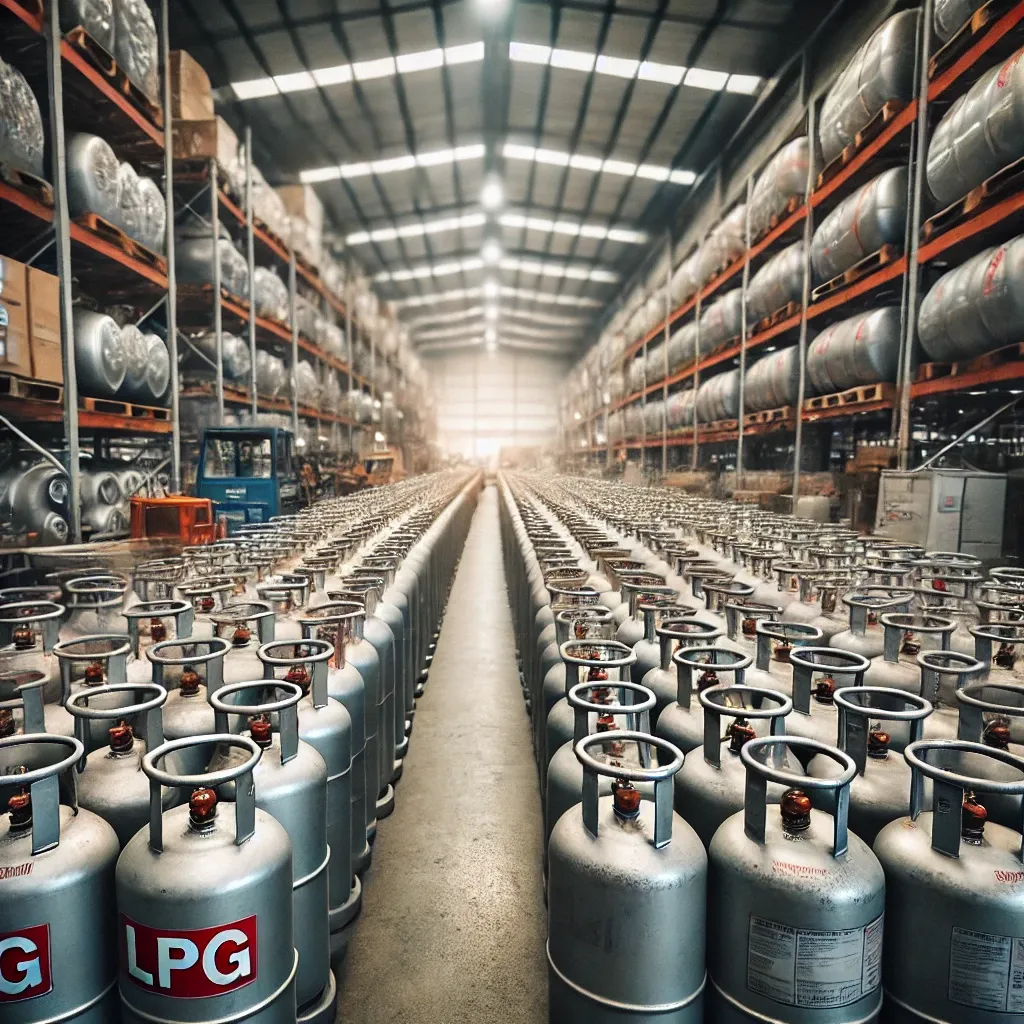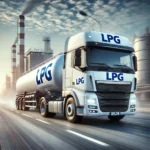Are you curious about how LPG gas cylinders are handled, tested, and collected? Learn about the processes behind LPG gas barrel tests, collection, removal, replacement, and their pricing. Ready to dive in? Let’s explore!
LPG Gas Cylinder Collection: An Overview
LPG (liquefied petroleum gas) cylinders are a critical component in providing cooking, heating, and energy solutions across residential and commercial spaces. Over time, LPG cylinders need regular inspection, maintenance, and safe handling. This article explores the entire process of LPG gas cylinder collection, from testing to removal, and even pricing. Understanding how gas cylinders are managed is essential for ensuring safety and compliance with regulations.
LPG gas cylinder collection is a routine process where empty or expired cylinders are collected, inspected, and either refilled or safely disposed of. In this section, we will walk through the various aspects of LPG cylinder collection and why it is vital for safety.
Key Aspects of LPG Gas Cylinder Collection
-
Inspection and Testing Before cylinders are collected, they undergo testing to ensure that they are not damaged or defective. This test often includes checking for leaks, rust, and structural integrity.
-
Scheduled Collections LPG cylinder collections are typically scheduled at regular intervals to prevent excess accumulation of empty cylinders. This ensures that there is space for new cylinders and avoids safety hazards.
-
Handling and Transport The transportation of LPG cylinders must adhere to strict safety guidelines. Trucks used for cylinder collection are often designed with special compartments to avoid accidents or leakage during transit.
-
Refilling or Recycling Once collected, cylinders are either refilled with LPG or sent for recycling, depending on their condition and usage.
Why Safe LPG Cylinder Collection Matters
The safe collection and management of LPG cylinders prevent potential hazards, such as gas leaks, explosions, and other risks associated with improper handling. Companies in the LPG industry follow standardized practices to ensure these cylinders are inspected regularly and are fit for continued use.
To learn more about how LPG cylinders are collected and handled, click below for more information:
LPG Gas Barrel Test: Ensuring Safety and Reliability
The LPG gas barrel test is a crucial step in ensuring the safety and efficiency of the gas cylinders used in households and businesses. These tests help determine the structural integrity of each barrel, ensuring that it can safely withstand the pressures and conditions it will face while in use.
LPG barrels are put through various testing processes to check for corrosion, leaks, and other defects that could cause hazardous situations. Let’s break down the key aspects of the LPG barrel testing process.
Types of LPG Gas Barrel Tests
-
Visual Inspection The barrel is visually examined for any signs of rust, corrosion, dents, or damage that could compromise its safety.
-
Hydrostatic Testing In this test, water is used to pressurize the cylinder, helping identify any potential weak points or leaks in the barrel’s structure.
-
Leak Detection The barrels are tested for gas leaks using specialized equipment to ensure that they are not prone to releasing gas unintentionally.
-
Pressure Testing To ensure that the cylinder can safely handle the pressure exerted by LPG, a pressure test is conducted. This ensures the gas does not leak under normal usage.
-
Ultrasonic Testing This method uses sound waves to detect internal flaws within the metal structure of the cylinder that may not be visible from the outside.
Why Is Testing Essential?
Regular testing is critical in maintaining a safe environment for consumers and suppliers. A faulty gas barrel could lead to severe accidents, including fires or explosions. As LPG cylinders are often stored in homes, businesses, and industrial sites, proper testing helps prevent these life-threatening situations.
To dive deeper into the importance of LPG barrel testing and the methods used, click below:
👉 More Information on LPG Barrel Testing 👈
LPG Gas Barrel Removal: Proper Disposal and Replacement
Once LPG gas barrels have been used or deemed unsafe for further use, they need to be carefully removed from circulation. This process, known as LPG gas barrel removal, is just as important as testing and collection to ensure that potentially hazardous cylinders are no longer in circulation.
The removal process involves strict guidelines to make sure that cylinders are either returned to manufacturers for recycling, safely disposed of, or properly replaced with new, fully inspected barrels.
Steps in LPG Gas Barrel Removal
-
Inspection for Safety Before removal, the barrels are thoroughly inspected to ensure that they pose no immediate safety threat. This inspection checks for leaking gas or physical damage.
-
Valve Removal The valves of the barrels are removed to prevent accidental discharge of gas during the removal process.
-
Transporting Barrels Once deemed safe for removal, the barrels are carefully transported to recycling or disposal centers, following all safety protocols.
-
Proper Recycling Cylinders that are no longer suitable for use are sent to recycling centers, where the materials are reused for other manufacturing purposes.
-
Replacement with New Cylinders As part of the regular gas supply, the old cylinders are replaced with newly inspected and refilled ones, ensuring continuous service.
The Importance of Barrel Removal
Proper barrel removal and disposal is essential for maintaining the safety of households and businesses. By following industry standards for the removal of expired or damaged barrels, suppliers minimize the risk of accidents and ensure that only certified and safe barrels are in use.
Click below to learn more about the process of LPG gas barrel removal:
👉 Discover More About Barrel Removal 👈
LPG Gas Barrel Price: Understanding the Cost
The price of LPG gas barrels can vary depending on several factors, including the cylinder’s size, location, and the company providing the service. Whether you’re refilling a small cylinder for home use or requiring larger barrels for industrial use, understanding the price structure is essential for budgeting and making informed decisions.
Factors Influencing LPG Gas Barrel Price
-
Size of the Cylinder Larger barrels tend to cost more due to the increased amount of LPG they hold.
-
Refill vs. New Cylinder Refilled cylinders are usually less expensive than new ones, as they are reused. However, new cylinders come with a guarantee of a longer lifespan.
-
Location Prices for LPG gas barrels can vary depending on where you are located. Shipping costs and regional taxes may impact the price.
-
Supplier Pricing Different suppliers may offer varying prices for the same service, depending on their operational costs and business models.
-
Bulk Purchases Purchasing multiple cylinders or bulk refills can often reduce the overall cost per barrel.
How to Get the Best Price
To get the best price for LPG barrels, it’s essential to shop around and compare prices from different suppliers. Look for deals on refills and inquire about any potential discounts for long-term customers or large orders. Additionally, ensure that the supplier is reputable and follows all safety and inspection guidelines.
For more insights on how LPG barrel pricing works and how to find the best deals, click below:
👉 Get More Pricing Information 👈
Conclusion
In conclusion, managing LPG gas cylinders involves a careful balance of collection, testing, removal, and pricing. Understanding these processes ensures that gas cylinders remain safe for use and comply with safety standards. Whether you’re using LPG at home or in an industrial setting, knowing the procedures for gas barrel testing, collection, and replacement is crucial for maintaining a safe environment.
Remember, always prioritize safety by choosing reliable suppliers who follow the best practices in cylinder management and testing. Stay informed and make sure your LPG cylinders are properly handled at every stage.






